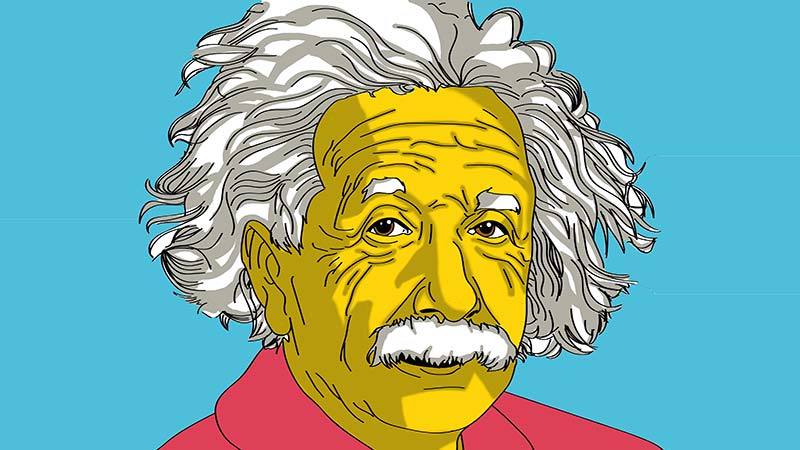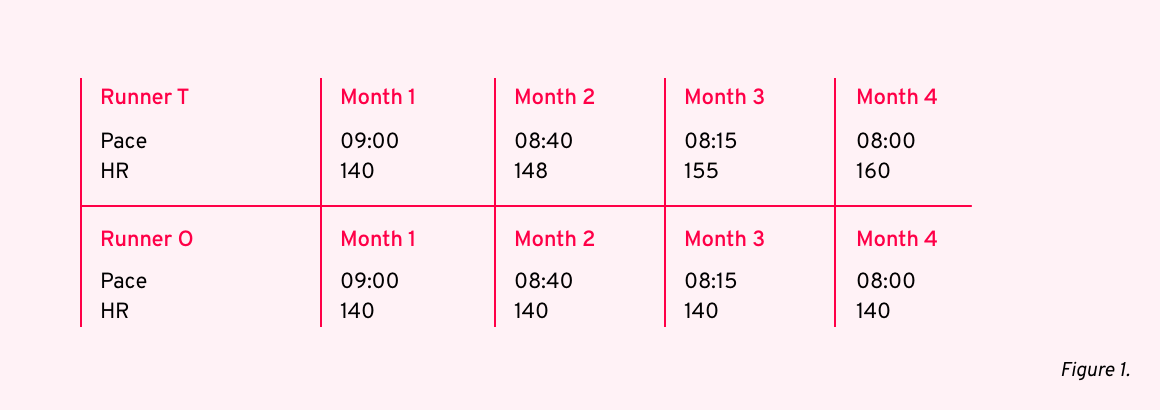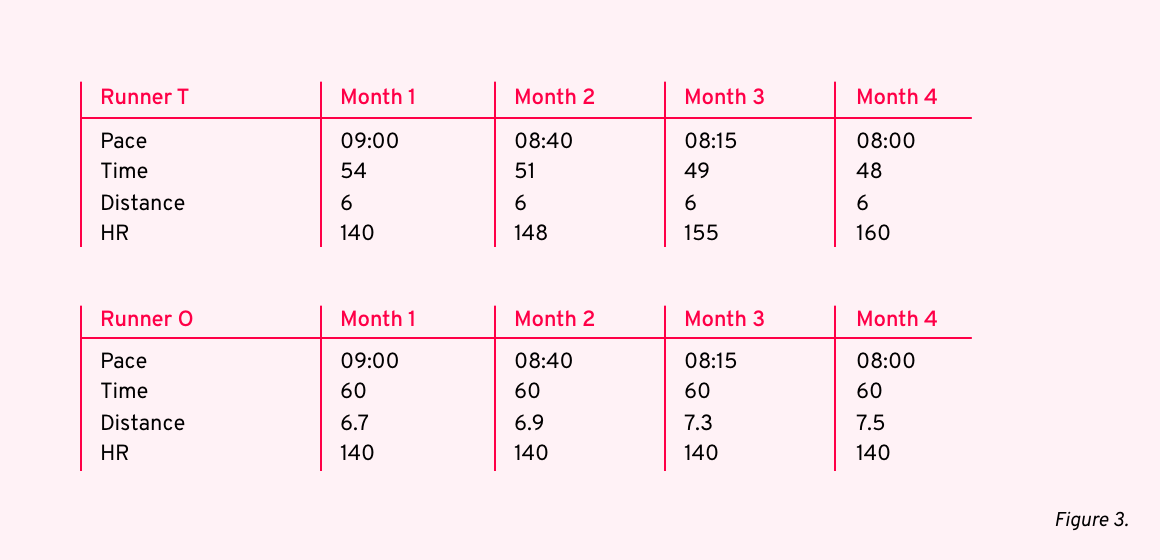
Einstein revolutionized physics and may have done a similar 180 in exercise science
It wasn’t easy breaking traditional science, but Albert Einstein’s most famous formula, E=mc2, revolutionized physics and moved it into the mainstream. It’s not easy to break tradition in fitness training either, but doing so can revolutionize an athlete’s world.
A missing factor for millions of people who train for fitness and competition is a different E: effort. By assigning objectivity to E, while considering speed, time and distance, we can personalize exercise progress to help athletes reach their potential, reduce injury risk and improve health. It’s much less complex than E=mc2, and if Einstein were your coach, it’s how he would do it.
For two centuries, Newtonian tradition dictated that space and time intervals are absolute, or fixed, with the speed of light being relative, or variable. Einstein used the logic of modern mathematics to turn this idea upside down, showing that it’s the speed of light that’s absolute, with space and time being relative. In sports, turning some traditional training ideas upside down can also lead to better outcomes. It’s relative to all who exercise.
Objective approaches to exercise can help improve performance, prevent injury and ensure other benefits. This includes simple scientific measures that plot important relationships between speed, time and distance, as it relates to effort.
Traditional vs. Objective
- Traditional workouts are typically associated with training at a relatively constant speed for a given distance, with a variable effort. For example: Running 5 miles at 8-minutes per mile pace.
- Objective workouts involve accurate measures of a constant effort and time, with variable speed and distance. Effort is most easily measured by heart rate: E=HR. The same but objective workout might now be: Running one hour at 140 HR.
Imagine being able to run faster today with the same effort compared to a month ago. That’s one benefit of objective training that monitors this progress. While most workout formats lead to faster training performance over time, it’s often done with increased effort, a reflection of improved muscular effort but not necessarily better economy. Using heart rate as a measure of effort, E=HR, we can see, hypothetically, the progress of two runners of very similar abilities (although based on actual data) in relation to speed/pace. Runner T follows traditional training, and Runner O includes objective HR monitoring.
Figure 1. Traditional vs. objective training progress. Estimations in time, distance and HR for Runner T and Runner O. (Pace: minutes/mile; HR: average beats/minute. Both athletes warm up and cool down at slower paces.)

In Figure 1 above, note the significant increase in stress (as indicated by increased HR) in Runner T after four months compared to Runner O. Both runners can train at the same faster pace, but Runner T’s HR is 20 beats higher. While this added stress could temporarily benefit Runner T, over time the systemwide training stress can adversely affect recovery, health and fitness. (See: Maffetone P and Laursen P. Athletes: Fit But Unhealthy. Sports Medicine. 20162:24.)
The traditional focus of training a set distance (e.g., miles) at a given speed (pace), is associated with little or no measurement of E. Turning this upside-down translates to exercise at a specific effort, E, measured by HR, for a certain time. This is summarized in Figure 2.
Figure 2. Traditional versus objective exercise approaches.
Figure 3 below is an expansion of Figure 1 to include time and distance. It shows that during traditional training, time is reduced slightly with distance unchanged, while objective monitoring using HR leads to slightly reduced distances but the same time.
Figure 3. Estimated time, distance and HR for Runner T and Runner O. (Pace: minutes/mile; HR: average beats/minute; distance: miles. Both athletes warm up and cool down at slower paces.)

Now imagine these two runners in a race, at maximal effort. Given the relative changes in HR and pace observed in training, Runner O may be more economical, which could also reflect in a faster race pace. More on that later.
To help make training truly relative to health and fitness, we can scientifically individualize the process with numbers; E can be assigned a personalized, objective HR, one that reflects moderate or submax effort, a key component of most endurance training. Typical efforts for endurance training, to improve both health and fitness, may range from 70 to 80 percent of one’s maximal HR, yet many people train well above that level for part or much of the workout.
History of Tradition
Fifty years ago, the exercise boom began bringing runners, walkers, cyclists and other endurance activities to the masses. Exercise physiologist Dr. Kenneth Cooper coined the term “aerobics” in the 1960s, and developed a fitness test for the military. He measured how far a person could walk or run in 12 minutes. Still in use today (although being phased out), the Cooper Test does not measure aerobic function, which relies on slow twitch muscle fibers for endurance activity (moderate E and HR), but high-intensity anaerobic running (high E and HR). Unfortunately, this test does not measure E or HR. Two similar people completing two miles in 12 minutes can show very different HRs: one at 185 while another at 210, for example.
While big business continues profiting immensely from the exercise boom, selling shoes, junk food, race entries, and more, it appeared that people would benefit too. Unfortunately, that has not always been the case. During the boom:
- Injury, illness, even death, has reared its ugly head in many who exercise, from professional athletes to beginners.
- The overfat pandemic developed, which affects those who exercise too — in the US alone, 91 percent of all adults have excess body fat that impairs health — and it slows athletes down.
- Performance is waning. While records continue to break, one study showed that amateur running results tracking over 28,000 races (5K, 10K, half and full marathons) in the U.S. between 1996 and 2016 found that the average finishing time has significantly slowed. (See the analysis by Andersen and Nikolova.
Group Training
Both traditional and objective approaches have been employed in all sports training that involves running, walking, cycling, swimming, rowing, and during team sports such as soccer, football, basketball, boxing and others. Objective concepts are applicable to groups of athletes training together, whether a soccer, cross-country or basketball team, a group of friends meeting for a run, or an exercise class.
Invariably, these athletes will vary by age, fitness and health, experience and ability, and would therefore benefit from a personalized effort specific to their needs. This is most easily accomplished by monitoring HR as E. While some may lag behind the rest of the group during the workout, many try to keep up. But when measuring E as HR in each individual, we find that:
- Some athletes have a relatively low E, and the workout may be too easy, and they may not obtain as much benefit.
- Similar numbers may have moderate E, like Runner O in the above Table, obtaining good benefits.
- Others have much higher E and HRs, a sign of reduced fitness and increased stress that can raise the risk of injury and overtraining, and reduced longterm training benefits.
This strategy can change the playing field. During a team or group workout, individuals will no longer all train as a single pack, but follow their own personalized effort. While some may run more miles over a season, all will accumulate the same hours.
Whether local amateur road runners or a professional soccer team, exercise has a strong social component too. Many people like working out in a group, but not only is training not personalized, it can sometimes become competitive. Effort-oriented objective training can impact on this social tradition. However, athletes can still meet at the same time and location for training, and also finish at the same time, thus preserving both the social aspect, individualization, and each athlete’s health and fitness progress.
Application to Competition
As training speed/pace improves at the same submax HR, a measure of performance improvements, relative competitive improvements usually follow. This is applicable to all sports. For example, on the playing field or court, individuals will be able to perform their usual physical actions with a lower HR, or, more importantly, perform better — be faster for longer periods with less fatigue. This is easier to observe in events like running, where time and distance relative to HR are easily measured, and is discussed elsewhere:
- 5km Race Prediction from Submax Performance Tests: A pilot study
- Original Research: Marathon Pace Prediction
Let’s face it, despite the potential benefits of exercise, injury, illness, and poor performance have become as traditional as the workouts themselves. Objective measures that prioritize effort and HR can help personalize training, prevent injury and illness, and improve performance.
Over a century ago, Einstein took Newton’s traditional ideas of speed, time and distance and flipped it on its head, using logic to present a new and improved approach. We can do the same with exercise science to help improve health and fitness.
(This same title appeared a number of years ago in books and articles addressing our perception of time and its effect on exercise.)
The science behind why slow makes you fast
Many years ago I wrote an article called Want Speed? Slow Down! It remains very popular today. It details how slower training can lead to faster training and races paces. But why does this happen?
For starters, the phenomenon is something I observed clinically in working with athletes many years ago. I was able to first-hand witness and objectively document their progress. This data led to the creation of my 180 Formula and MAF Test which then allows individuals to track their own objective improvements.
Moreover, the scientific reasons why submax training, and in particular, strictly submax training, can improve pace or power at the same submax HR may be simple. One conclusion is that as improvements to the cardiovascular, autonomic, neuromuscular and other metabolic systems are made, movement economy improves. In particular, the slow-twitch aerobic muscle fibers function better with more circulation, increased ability to generate more energy (from fat) for movement, including better mitochondrial function, not to mention improved gait, and more endurance.
It’s quite clear that not only can athletes get faster or generate more power at the same submax HR over time, but two other factors are important as well. First, these improvements can be observed during periods of strictly easy aerobic training without any previous or concurrent hard workouts like HIIT. And, competitive performance improves as well. A study from my clinic demonstrates both points. In a group of 229 seasoned male and female runners who exclusively trained at submax paces for between three and six months:
- Almost all athletes improved submax paces at the same training HR during the three- to six-month period.
- All athletes competed in a 5k road race, and over 76 percent ran a personal best.









